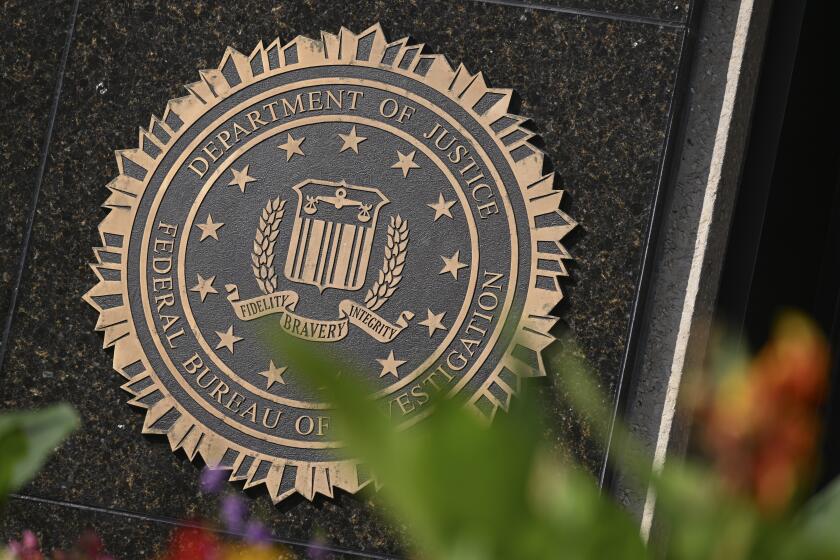Mexicans See Good and Bad Side to Wall
At the beginning of every school year, bad news comes from Mexican heartland states such as Zacatecas and Queretaro: Local authorities are closing hundreds of schools because so many families have moved north to the United States.
Mexicans feel helpless before the migrant exodus, and talk about it the same way they talk about the weather. Everyone complains about it, but there’s not much you can do about it.
On Friday night, the U.S. Senate approved a 700-mile-long border wall in a bid to stop the immigrant flow. The decision has left many Mexicans wondering whether the open door to the north may slowly be closing.
Some Mexicans saw the vote as a collective slap in the face that highlighted the failure of their country’s leaders to give Mexicans a reason to stay home.
“Our politicians have not lived up to their responsibilities toward the people who migrate,” said Homero Aridjis, a poet, activist and onetime Mexican diplomat. “Our government has failed before the economic and social plight of the poor.
“I’m from Michoacan,” said Aridjis, naming a state west of Mexico City known for exporting its sons and daughters to the U.S. “When I go there, I see fertile farmland and orchards that have been abandoned.”
Few observers here expect the new barriers to stop people from Mexico and Central America from seeking a better life in the United States. New smuggling routes are expected to open through ever-more-remote stretches of desert, or over the waters of the Rio Grande.
But the bill approved by Congress, and soon to be signed by President Bush, signals a new shift in an era that has seen dramatic cultural and demographic changes in both countries.
The wave of Latin American migration that began in the 1980s helped make Latinos the largest minority in the U.S. and the largest ethnic group in Los Angeles and many other American cities. The beginning of the 21st century saw Latino immigration spread to almost every corner of the United States, with Spanish-speaking communities booming in states such as Tennessee and Ohio.
Latin Americans see the congressional initiative as a rejection of the cultural changes brought forth by Latinos in the United States. In angry editorials and speeches, Mexican writers and politicians have compared the border fence project with the Berlin Wall and the Great Wall of China.
“The exploitation of fear among the citizens of the United States has been at the center of the debate,” the newspaper El Universal said in an editorial Saturday. “This wall, like all those built with xenophobic aims, will be far from effective.”
President Vicente Fox and President-elect Felipe Calderon have denounced the new fence, as have a host of Mexican political leaders.
For decades, social scientists here have seen migration to the north as a “safety valve” that keeps Mexico from exploding into social conflict. Now, a small number of voices are saying the brain and muscle drain to the U.S. cannot continue indefinitely.
When the head of Mexico’s central bank told a Texas newspaper last week that a new wall between the United States and his country might not be such a bad thing, his remarks were front-page news here. Surprisingly, there were few public expressions of disagreement.
“It would be best to keep its people in Mexico, and it would give incentives for Mexico to create jobs that are needed,” Guillermo Ortiz, the bank official, said in an interview with the editorial board of the Dallas Morning News.
The border fence will be an expansion of the measures first undertaken in the mid-1990s by U.S. authorities as part of Operation Gatekeeper in San Ysidro, Calif., and Operation Hold the Line in El Paso. The U.S. Border Patrol built a new fence of corrugated steel, installed motion detectors and hired thousands of new agents.
The measures pushed illegal immigrants into the Sonoran Desert in Arizona and other remote areas, where several hundred die each year from dehydration and exposure.
Many analysts believe the border enforcement measures of the last decade have done little more than change the traditional back-and-forth patterns that saw thousands of Mexicans take seasonal work in the U.S. and then return home to their families.
In testimony to the House Judiciary Committee in August, Wayne Cornelius of the Center for Comparative Immigration Studies at UC San Diego said that the get-tough approach at the border had only succeeded at “bottling up” millions of immigrants in the U.S.
“Given the high costs and physical risks of illegal entry today, they have a strong incentive to extend their stays in the U.S.,” Cornelius said.
Rather than return to Mexico, many immigrants are sending for their families, accelerating the declining enrollment in rural Mexican schools, analysts say. In Zacatecas, state education officials said last month they were closing 269 schools because of declining enrollments.
Before 1929, Mexicans were not required to obtain a visa to enter the United States. Ever since, “the history of the border has been a history of closing the border,” said Tony Payan, a professor at the University of Texas in El Paso and author of “The Three U.S.-Mexico Border Wars: Drugs, Immigration, and Homeland Security.”
The new measures approved Friday will seal off most of the Arizona-Mexico border. Immigrant smugglers are likely to move farther east, to remote crossing points on the Rio Grande upriver from the Texas cities of Eagle Pass and Del Rio, Payan said.
Cornelius told the Judiciary Committee that even if the entire land border was sealed off, immigrant smuggling would probably move to the waters of the Gulf of Mexico.
Lorenzo Meyer, one of Mexico’s leading historians, argued that the Senate vote had revealed an essential hypocrisy in U.S.-Mexico relations.
“In 1993 we signed the North American Free Trade agreement,” Meyer said. “It was supposed to be the beginning of a period of cooperation and friendship.” Now the U.S. government has “unilaterally” announced the construction of a wall, he said.
“We see now that the idea of a united North America is fiction,” Meyer said. “The reality is the wall.”
More to Read
Sign up for Essential California
The most important California stories and recommendations in your inbox every morning.
You may occasionally receive promotional content from the Los Angeles Times.










